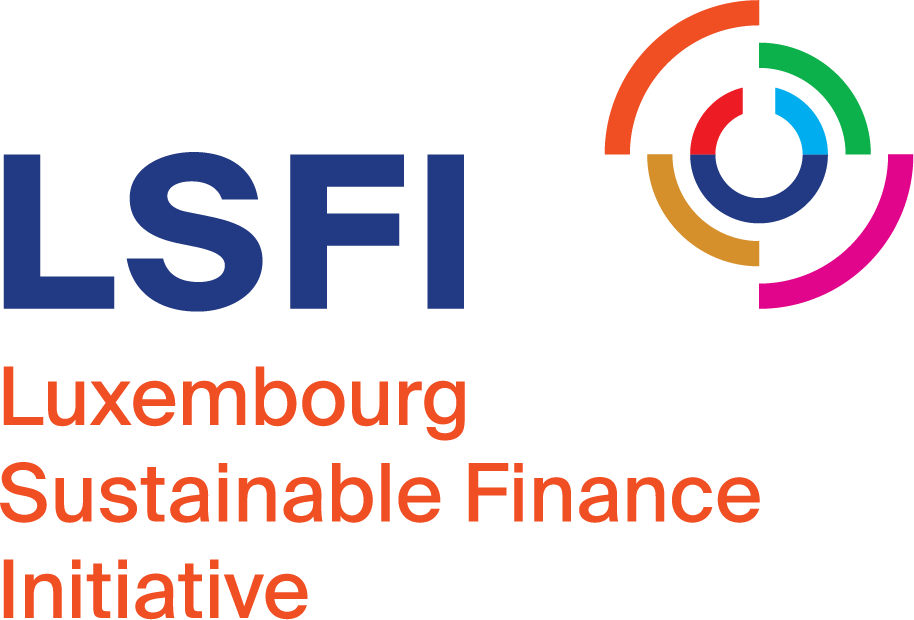Sustainable finance has certainly undergone an intense boost over the last few years. However, it is still uncertain how to ensure this shift translates into an actual impact on our economies and, furthermore, how to ensure this trend persists, going a step further from being a trend into becoming a norm and mainstream.
Among the different players and financial sectors involved in the sustainable finance landscape, the funds industry is in the spotlight. Reorienting financial flows towards sustainable investments is key, but it requires overcoming challenges associated with the fast-evolving regulatory agenda, the need of reliable and relevant data to ensure transparency, and the knowledge gap.
To further dive deep into the trends and challenges experienced by the Investment Funds industry, this month we have interviewed Marc-André Bechet, Deputy Director General at the Association of the Luxembourg Fund Industry (ALFI).
LSFI: According to ALFI’s European Sustainable Investment Funds Study 2022, net assets in sustainable funds domiciled in Europe have reached almost EUR 2 trillion in 2021, a figure up 71% from 2020. What is driving this shift in the investment funds industry?
Marc-André Bechet: Sustainability is in everybody’s mind. There is not a single day without ESG/ sustainable finance making the headlines in press and social media. The COVID pandemic has left marks, leading each of us to rethink what our true priorities in life should be. More recently, the war in Ukraine has added a further dimension in the equation. Globalisation, the sustainability of our business models, our lifestyle, the excessive reliance on non-renewable energy etc. are, in fact, all interconnected factors.
In the latest edition of ATOZ’s annual survey[1], 90% of persons surveyed in Luxembourg said that the COVID pandemic must lead us to “revise our view of the world”, and 55% are of the view that “we must reorient our economies towards more sustainable models”.
In a fascinating yet somewhat unnoticed strategy paper released in March, the European Commission indicated that the “European economy is undergoing unprecedented transformations towards a fair green and digital future in a context of massive uncertainties linked to the global and security outlook”[2].
A shift in societal values, an extremely ambitious sustainable finance agenda of the EC which has translated into major pieces of legislation – SFDR and the Taxonomy Regulation – are certainly two of the key drivers.
Retail investors, institutional investors and asset owners such as pension funds and sovereign funds all have sustainability in their agenda, with various levels of intensity.
Asset managers have obviously reacted to the investors’ demand. That said, long before the regulations kicked off, some early movers had already set up sustainable and/ or impact funds – very often as a matter of conviction. For example, Luxembourg has developed an expertise in micro-credit funds for 15 years or so….
For this trend to continue, what has to be done?
My magic circle would be: (i) data, (ii) reporting from investee companies, (iii) sequencing, clarification of definitions and refinement of the current framework, (iv) convergence, (v) investor focus and (vi) international level playing field.

Marc-André Bechet, Deputy Director General ALFI
And patience…
At the expense of running against the tide, I sense that we will observe a temporary pause in the launch of new products at least in 2022. The % of SFDR Art 8 and Art 9 funds is already pretty high, 44% on average in Europe and 50%[3] in Luxembourg. But progress is still needed in respect of the points mentioned hereabove.
In the short term, investment funds which are genuinely committed to investing in sustainable activities will almost invariably not be in a position to report on their alignment with the taxonomy, since the number of investee companies which are bound to report under Art 8 of the Taxonomy Regulation/ NFRD is limited. CSRD is a game changer: from 2024 onwards, companies will provide a reporting as required by the Taxonomy Regulation. CSRD also means that the number of reporting companies in Europe will go up from currently 11,000 to 50,000[4].
The current legislative framework is as good as it can be, but it definitely requires further clarifications and tightening up. The proportion of Art 8 and Art 9 funds varies across jurisdictions. This is definitely not the result of regulatory arbitrage but rather evidence of diverging interpretations. In that sense, one can only welcome the work that ESMA will be carrying out in the coming months as part of its 2022-2024 Sustainable Finance Action Plan[5].
From an investor’s perspective, it is very unfortunate that the categorisation in Art 8/ Art 9 products is almost unconsciously used when communicating towards investors. This categorisation was not meant to be a quasi-label in the first place[6]. The asset management industry would be better off rethinking how products are presented to investors.
In the mid to long-term, convergence at international level is an absolute must for different reasons. First, the European fund industry represents a fraction of the world’s fund assets. A re-orientation of financial flows towards sustainable investments can only happen worldwide if we want it to be successful. Incidentally, there is some evidence that funds might be tempted to change their geographic asset allocation as a result of a lack of data in non-European – primarily – emerging markets[7], so availability of data at investee company level across all jurisdictions is also a necessity.
There is a clear increase in sustainable products; however, of the funds domiciled in Luxembourg, only 6% of the corresponding assets are classified under article 9 of the SFDR. Can we speak about an actual transition given this figure? Are the sustainable investments helping reach the Paris Agreement objectives and SDGs?
I would argue that there is too much focus on the categorisation under Art 9 which admittedly refers to so-called “dark” green products or Art 8 for “light” green products, and I don’t think this is really helpful for several reasons.
As said above, the artificial focus on this categorisation is not what the regulation strives for. The key objective here is to incentivize investee companies to move towards a more sustainable business model. Asset managers will be playing a key role in engaging with the management of companies they invest in. One of the broad strategies that asset managers can apply is a best-in-class approach, which comes down to saying that not all economic activities can and will be considered as 100% sustainable as per the SFDR’s definition. There will always be negative externalities when producing say cement or steel, but investment should be re-directed towards the champions in each economic sector. In some, relative rare cases, exclusion of certain activities will admittedly be the only option.
There are all sorts of different investment strategies in Art 8 funds. We will only gain from making sustainability a cornerstone in mainstream strategies rather than a niche product.
The second consideration is that we need transparency on the intensity level of sustainability in financial products. We will have a better view once SFDR level 2 will have kicked off, so from January 2023 onwards. Ultimately, once investee companies will comply with CSRD in 2024, funds will obtain the data that they require and will provide investors with the relevant information on the level of alignment with the Taxonomy.
In terms of product categorisation, the market would be better off if we had standardised and widely accepted classifications in which funds could be grouped in a rather consistent way, to the extent that this is possible at all.
Impact funds are still very much outweighed by funds with less ambitious ESG objectives. In fact, only about 1.5% of total European funds’ net assets follow an impact investing approach. What is needed to see impact investments becoming mainstream?
In the ALFI Study, the universe of funds as well the data used, definitions etc. are aligned on Morningstar’s methodologies. The definition of a sustainable fund is narrower than the full universe of Art 8 and Art 9 funds.
The authors of the Study found out that the proportion of sustainable funds in Europe is 16% of AuMs. This universe is then broken down in impact funds (approximately 7% of the total) and “other” sustainable funds[8](93%).
Impact investing and Art 9 are not one and the same concept although it is fair to say that by far and large, impact funds would rather tend to be categorised as SFDR Art 9 products.
Given their very specific objective, it is unlikely that impact funds will become mainstream even though I would agree that the current 1.5% is below what we should expect. Conversely, not all impact funds fit well into the current regulatory framework that applies to Art 8 or Art 9 products. As an example, we hear that it is not straightforward for micro-credit funds to comply with the reporting requirements of SFDR and the Taxonomy Regulation. Some asset managers might even re-categorise their Art 9 impact funds in Art 8 products.
What are the main challenges you have observed that the investment funds industry faces regarding sustainability?
The sustainable finance agenda will re-shape the way the asset management and fund industry operates across the whole value chain – from investment research to reporting to investors. Some of the competences required are entirely new and not traditionally found in the financial sector. This is in particular the case when it comes to analysing and understanding the data that investee companies will report on, perhaps even more so in the sphere of private assets which by definition will require most customisation. The industry is not yet at a level where there would be well-defined job descriptions, with readily available trainings for each of those.
Risk management is also an area which is very much a moving target. Best practices will develop over the coming months and years.
As mentioned before, the availability, but also the reliability of data, is probably the highest concern for the time being. In the absence of data, asset managers might turn to investee companies, or to third parties, under the condition that the data obtained can be considered equivalent to the data made available under the disclosures made in accordance with Art 8. This will prove difficult in practice.
The next challenge will soon become reality. With the changes to the MiFID II suitability assessment[9] as from 2 August 2022, investment advisers will be required to discuss suitability preferences with their clients. The process is complex. Investors do not necessarily have the adequate level of financial literacy. In addition, asking questions on sustainability preferences will probably generate a greater appetite for sustainable products whilst at the same time, distributors of financial products will have a relatively limited number of products on offer that meet the investors’ expectations, at least in the short-term.
To wrap up, when looking at the results of the European Sustainable Investment Funds Study 2022, what surprises you the most? And why?
The divergence in approaches in Europe is unnerving. I would however tend to refute the argument that asset managers at large exploit the vagueness of the regulatory framework, even though there will always be a few exceptions.
Across Europe, the % of Art 8 products varies widely. In fact, regulators, asset managers and investors have a common interest to get clarity on that front. Absolutely no stakeholder will gain anything from watching the next greenwashing scandal unleash. Product manufacturers as well as intermediaries may be subject to legal action from investors. The financial industry may also suffer from the investors’ perception, rightly or wrongly, that it is not up to the challenge.
More importantly, at the end, all we want is the Action Plan of the EC to work according to plan. Financial flows must be re-oriented towards sustainable investments. It is not an option, it is an absolute necessity for all of us.
My second observation is more of a technical nature. So far data vendors tend to report on mainstream funds – more or less UCITS – whereas it seems more difficult to obtain accurate data on private assets funds[10]. There is a bit of a paradox in that in fact an asset manager of say a real estate fund for instance may in fact have the necessary tools to measure progress made on energy efficiency, water usage etc. Yet the fund as a whole will not necessarily be categorised as a sustainable fund.
“The whole sustainable finance agenda is a fascinating topic. It is existential for our societies. But there is not a single day without something new popping up…” – Marc-André Bechet Deputy Director General at the Association of the Luxembourg Fund Industry (ALFI)
_______________
The opinions and thoughts expressed in this article are those of the author and do not necessarily reflect the views of ALFI.
References:
[1] ATOZ Survey 2021: “A wind of change” – New societal challenges and the ability to rethink the world: What does the population think? – page 14 and page 15, ATOZ, 28 October 2021
[2] Communication from the Commission to the European Parliament, the European Council, the Council, the European Economic and Social Committee and the Committee of the Regions – Towards a green, digital and resilient economy: our European Growth Model, COM(2022) 83 final, 2 March 2022
[3] European Sustainable Investment Funds Study 2022 (“ALFI Study”), Figure 18 page 37
[4] Press Release of the European Commission on 21 April 2021
[5] Sustainable Finance Roadmap 2022-2024, ESMA30-379-1051, 10 February 2022
[6] Key priorities for EU retail fund investors, Verena Ross, Chair, ESMA34-466-284, 31 May 2022
[7] TRV Risk Analysis, the Drivers of the Costs and Performance of ESG Funds, ESMA50-165-2146, 23 May 2022
[8] ALFI Study, Figure 1
[9] Commission Delegated Regulation (EU) 2021/1253 of 21 April 2021 amending Delegated Regulation (EU) 2017/565 as regards the integration of sustainability factors, risks and preferences into certain organisational requirements and operating conditions for investment firms
[10] ALFI Study, “Sustainability is more prevalent in UCITS than in regulated AIFs”, page 20.





